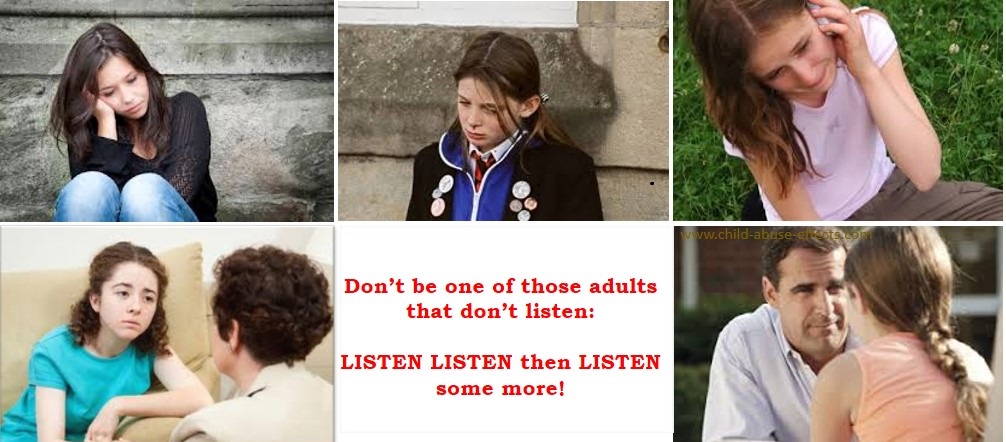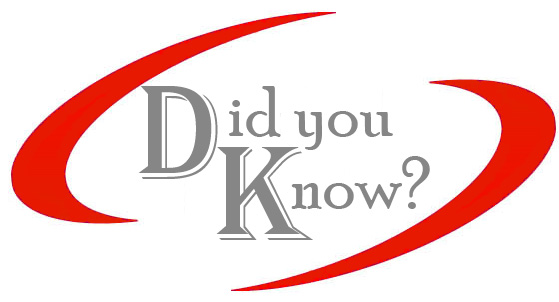Female Victims

Females report sexual abuse more often than males. However, female victims of sexual abuse are often blamed for the sexual advances of a male offender, even when the female is a young child.
|
|
|
Some Facts About Female Victims:
 |
Females are more likely to develop eating disorders as adolescents than those who are not sexually abused (Wonderlich, 2000, pp. 1277-12832). Bulimia and Eating Disorders provides some information and resources. |
 |
Female victims are much more likely than their male counterparts to be sexually abused in their homes. |
 |
80% of female prisoners were victims of childhood physical or sexual abuse (Conference on Child Victimization & Child Offending, 20003). |
 |
75% of Aboriginal girls under the age of 18 were sexually abused; 75% of Aboriginal victims of sex crimes were females under 18 years of age; 50% were under 14 years, and almost 25% were younger than 7 years (Alliance of Five Research Centres on Violence, 19994). |
 |
In 1995, B.C. Children's Hospital5 found that 58% of cases seen by the child abuse team involved sexual assault, with 78% of the victims being female and 44% being under 5 years of age. |
 |
Young women who had not participated in a school abuse prevention program in childhood were about twice as likely to have become female victims of sexual abuse as those who had participated in a prevention program (Gibson & Leitenberg, 2000, pp. 1115-11256). |
 |
In the Canadian National Population Health Survey, 75% of female victims of sexual abuse did not report their abuse experience (Matthews, 1996, p. 157). |
 |
In a study of 938 adolescents admitted to residential, therapeutic communities for the treatment of substance abuse and related disorders, 64% of the girls reported histories of sexual abuse (Hawke, Jainchill & DeLeon, 2000, pp. 35-478). |
 |
In a study of pregnancy risk among 200 women aged 12 - 18 years of age, Rainy, Stevens-Simon and Kaplan found that female victims of sexual abuse were more likely to report having wanted to become pregnant, having boyfriends who wanted them to become pregnant and fearing infertility because of gynecologic and obstetric problems resulting from repeated sexual abuse (Blinn-Pike et al., 2002, p. 19). |
Societal Biases of Female Victims:
|
|
If a female has a crush on the male who sexually assaults her, she may be blamed for seducing him, rather than the blame being placed where it belongs: on the offender. |
|
|
As with boys, if the girl's body has responded sexually, she feels she is somehow responsible for the sexual abuse. |
|
|
If the girl doesn't fight her abuser, she may be viewed as "liking it". |
 |
Female victims of sexual abuse often don't give struggle. Girls are still taught to be "nice" and many won't fight off an offender because of this perception. If a girl believes her abuser will become more violent if she fights, then often times, she will submit. If she does submit, cultural biases tend to put the blame on her as a willing participant. |
|
|
If the girl is promiscuous, she is often blamed for her sexualized behaviour, rather than seen as a legitimate victim of sexual abuse. |
|
|
If a girl dresses in a provocative way, she may be seen as "asking for it". |
|
|
If a girl receives money for sex, she is less likely to be perceived as a victim. |
|
|
If a girl is well endowed, if she is voluptuous, if her body looks more mature than her years, or if she acts more mature than her years, society may see her as "looking older than she is" or "acting older than she is" and excuse the offender's behaviour, rather than recognize the girl has been sexually abused. |
Regardless of how a child or adolescent responds to sexual advances, sexual abuse is NEVER the child's fault. Blame lies ENTIRELY with the offender.
<< Back to Sexual Abuse VictimsReferences
NOTE: Information pages on this site were based on material from the  Canadian Red Cross RespectED Training Program. Written permission was obtained to use their copyrighted material on this site.
Canadian Red Cross RespectED Training Program. Written permission was obtained to use their copyrighted material on this site.
1 Ford, H., Schindler, C., & Medway, F. (2001). School professionals' attributions of blame for child sexual abuse. Journal of School Psychology, 39(1).
2 Wonderlich, S. et al. (2000). No title. In Sexual Abuse Statistics (Impact of Child Sexual Abuse). Retrieved November, 2002, from http://www.prevent-abuse-now.com/stats.htm#child
3 Conference on Child Victimization & Child Offending. (2000). Working together for children: Protection and prevention data needs for timely intervention.. Paper presented in Toronto, Ontario.
4 Alliance of Five Research Centres on Violence. (1999, December). Violence prevention and the girl child: Final report.. Retrieved January, 2000, from http://www.unb.ca/departs/arts/CFVR/girl.html
5 British Columbia Children's Hospital. (1995). CPSU Statistics. B.C. Children's Hospital: Vancouver.
6 Gibson, L. & Leitenberg, H. (2000). Child sexual abuse prevention programs: Do they decrease the occurrence of child sexual abuse? Child Abuse and Neglect, 24(9), 1115-1125.
7 Matthews, F. (1996). The invisible boy: Revisioning the victimization of male children and teens. Ottawa: National Clearinghouse on Family Violence.
8 Hawke, J., Jainchill, N., & DeLeon, G. (2000). School professionals' attributions of blame for child sexual abuse. Journal of Child and Adolescent Substance Abuse, 9(3), 35-47.
9 Blinn-Pike, L. et al. (2002). Is there a causal link between maltreatment and adolescent pregnancy? A literature review. Perspectives on Sexual and Reproductive Health, 17(1).
From Victim to Victory
a memoir
How I got over the devastating effects of child abuse and moved on with my life
From Victim to Victory
a memoir
How I got over the devastating effects of child abuse and moved on with my life
Most Recent
-
Converging Stolen Lives
Jan 30, 18 01:13 PM
There was a time and space I didn’t think about you, or your abuse. Where when I looked back at my life, I only saw normal things, a normal childhood. -
A letter to one of the 13 Turpin children
Jan 29, 18 11:33 AM
A heartfelt letter by a former classmate that speaks to bullying and regrets. You'll find it on my Facebook group. I hope you'll join and get in on the discussion. -
Dissociated From Abuse
Jan 29, 18 11:00 AM
I was sexually abused by my father from age 6 to 13, which stopped when I started talking about it during the day. The teenage brother of my best friend



